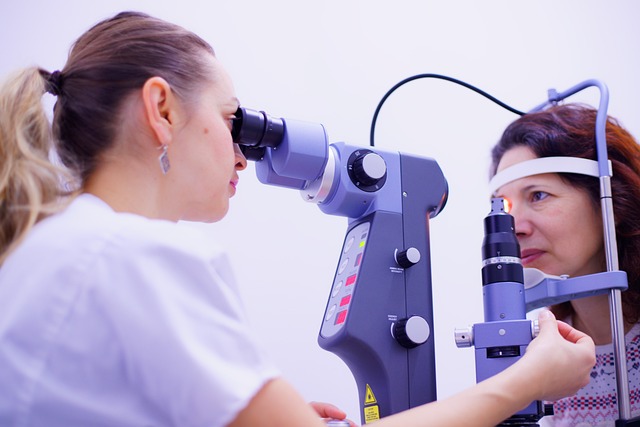The tear film is a thin fluid layer that gives a smooth surface to the cornea. It is composed of three layers: the innermost mucinous layer, an aqueous layer, and the outermost layer is the lipid layer.
Likewise, the tear film is a complex mixture of electrolytes, proteins (lipocalins, lactoferrin, transferrin, defensin and lysozyme), phospholipids, oligopeptides, glycopeptides and immunoglobulins. It also includes a variety of surfactants, such as surfactant protein A and D.
It is essential for eye health that the components of the tear film work harmoniously. Its stability, therefore, depends on the harmonic balance of its components. Alteration of one or more of the tear layers leads to dry eye syndrome.
Dry eye is a pathology of the tear film and ocular surface that causes discomfort and pain. The pathophysiology of dry eye includes tear film instability and inflammation of the ocular surface.
It is treated with artificial tears based on sodium hyaluronate (HS) and sodium carboxymethylcellulose, anti-inflammatory agents, autologous serum and occlusion of the lacrimal punctum. However, results are unpredictable and factors associated with refractory dry eye are unclear.
Vitamin D plays a role in calcium absorption, growth and bone formation. It also affects surfactant synthesis and calcium’s ability to bind proteins and prevent inflammation. This vitamin can be used as an adjuvant treatment to conventional dry eye treatments.
In the present study, the effectiveness of topical lubricants on the tear film and ocular surface of patients with dry eye was investigated according to the levels of 25 hydroxyvitamin D, in blood and supplementation with cholecalciferol.
| Patients and methods |
116 patients with dry eye participated between June 2015 and June 2016. The participants were divided into groups: with vitamin D deficiency (DVD) and without vitamin D deficiency according to the levels of 25HD in the blood.
The results of dry eye index, visual pain, eyelid hyperemia, tear breakup time, corneal fluorescein staining and Schirmer test were compared at baseline and after two weeks of treatment with artificial tears, before, during and after of using cholecalciferol supplement.
The goal of dry eye treatment is to reduce eye discomfort, eye damage, and restore tear film stability.
However, the different responses to treatment have not been explained. In the present study, the combination of artificial tears with carbomer and hyaluronate relieved ocular symptoms in both the vitamin D deficient and non-deficient groups.
Lubricants are used to relieve symptoms, while hyaluronate intervenes in the tissue repair process and contributes to tissue hydrodynamics, cell migration process and interactions between cell surface receptors.
The artificial tears formula with carbomer provides the three layers of tear film, reducing symptoms. However, in this study, tear breakup time, corneal fluorescein staining, and eyelid hyperemia only improved in the vitamin D deficiency group.
Tear breakup time is an indicator of the stability of the tear film. Fluorescein staining and eyelid hyperemia are related to inflammation of the ocular surface.
It should be noted that the indices related to dry eye, in response to the combination of artificial tears and hyaluronate, depended on the levels of 25HD. The Shirmer test values in the group without vitamin deficiency improved after the application of lubrication.
Likewise, in the present study, the dry eye index, tear breakup time, and eyelid hyperemia improved in response to topical treatment only in the group that received intramuscular cholecalciferol. High doses of intramuscular cholecalciferol have been reported to be more effective in increasing 25HD levels than oral supplementation.
Additionally, patients in the oral treatment group might have chosen this type of supplement because the eye symptoms were not as difficult to bear.
Although the interaction between lubricants and vitamin D has not been reported, there is several evidence that vitamin D could act in synergy with hyaluronate or carbomer tears.
Tear osmolarity and instability are the main mechanisms of dry eye. Vitamin D decreases tear osmolarity and increases stability. This vitamin stimulates the synthesis of phospholipids and the release of surfactants.
Phospholipids contribute to tear viscosity. Surfactants decrease surface tension, contribute to defense mechanisms and regulate immunity and inflammation. Surfactant proteins are involved in the incidence of several ocular surface pathologies.
The components of the tear film are in balance, therefore the influence of vitamin D on the ocular surface helps relieve the symptoms and signs of dry eye.
Vitamin D improves the functions of the corneal epithelial barrier. Vitamin D supplementation, therefore, harmonizes the components of the tear film and at the same time reduces inflammation of the ocular surface. In addition, vitamin B contributes to the absorption of calcium in the intestine and calcium plays an essential role in the secretion of the salivary and lacrimal glands.
Conclusions • The effect of topical lubricants depends on serum 25HD levels. • Vitamin D supplementation improves the effectiveness of topical treatment. • Vitamin D can be used as an adjuvant treatment in patients with dry eye. |
















